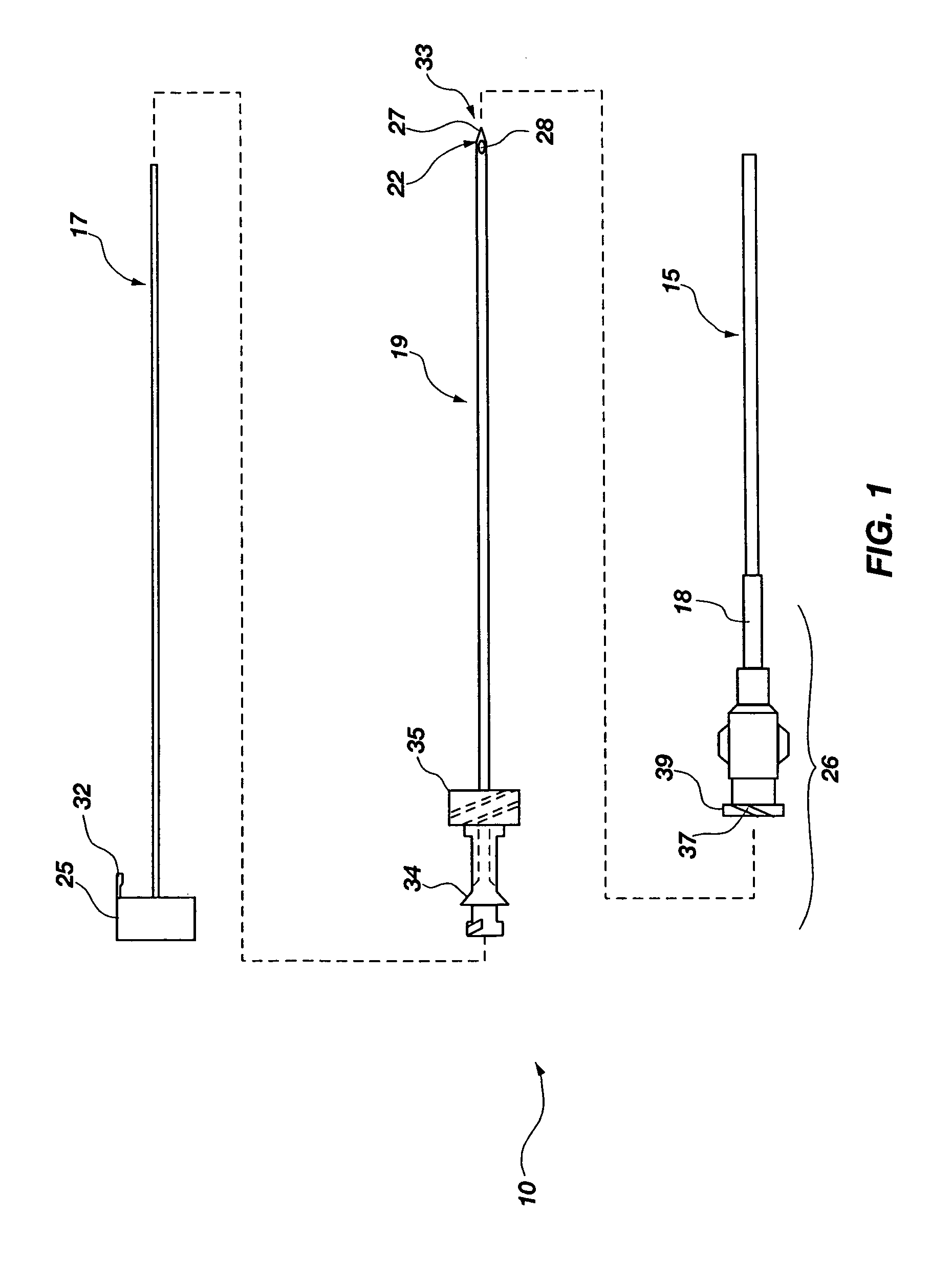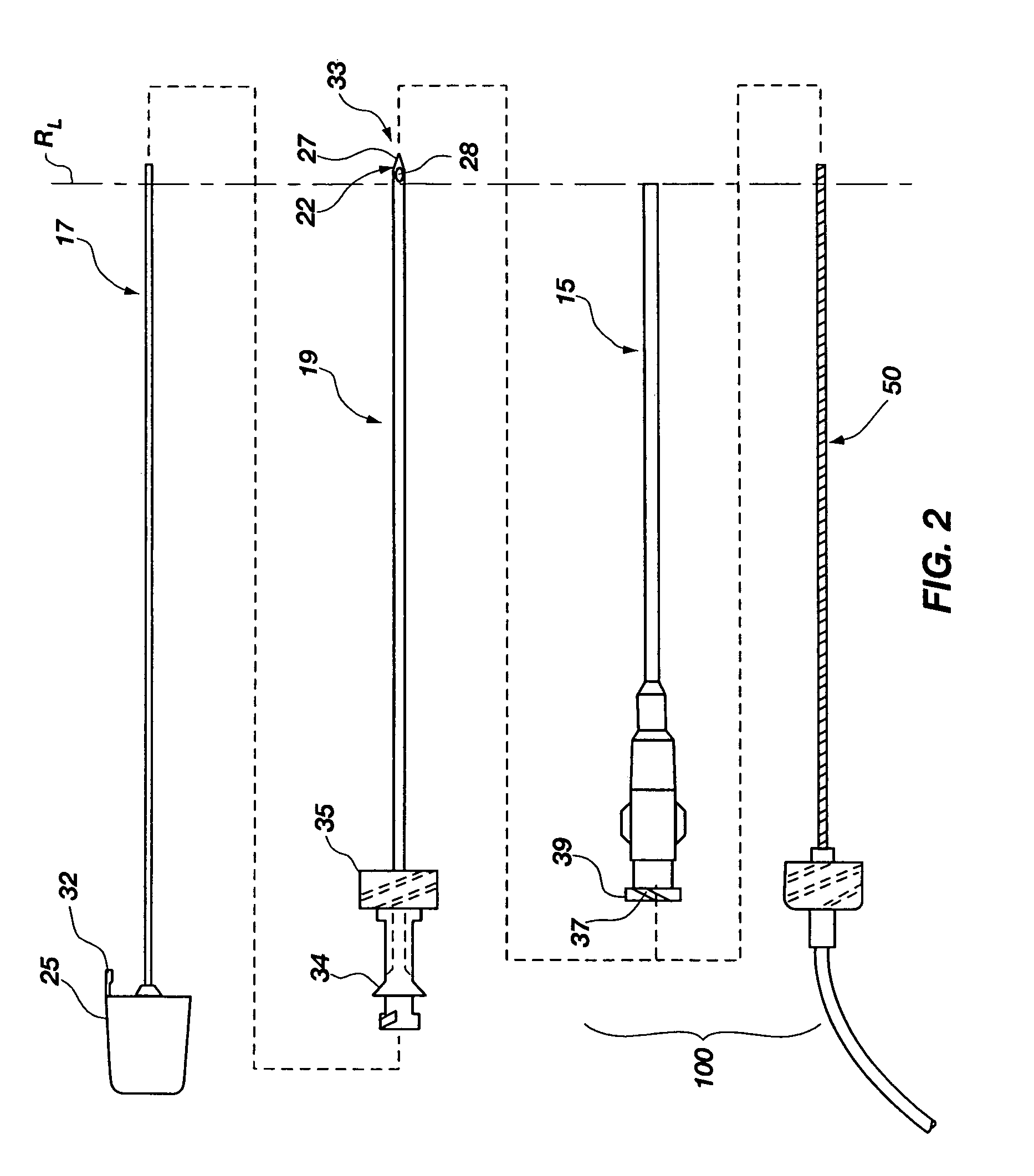Flow elements for use with flexible spinal needles, needle assemblies for manufacture and methods therefor
a technology of flexible needles and flow elements, applied in the field of medical devices, can solve the problems of large needles and catheters, unacceptably high incidence of post-dural puncture headaches, and severe limitations in the usefulness of continuous spinal techniques, and achieve the effects of preventing, or minimizing, the extent of the effect of flexible needles
- Summary
- Abstract
- Description
- Claims
- Application Information
AI Technical Summary
Benefits of technology
Problems solved by technology
Method used
Image
Examples
Embodiment Construction
[0053]The illustrations presented herein are, in some instances, not actual views of any particular flow element, flexible needle assembly or other feature of a flexible spinal needle assembly, but are merely idealized representation that are employed to describe the invention. Additionally, elements common between figures may retain the same numerical designation.
[0054]Generally, the flow element may be advantageously used with an integrated spinal needle or flexible needle assembly 10 (much like an intravenous needle and catheter mounted therein) as shown in FIG. 1, with the flexible needle 15 being releasably mounted on the outside of a support needle 19. The flexible needle 15 is configured for uses with embodiments of the invention as will be further described below. Flexible needle 15, being configured for placement on the outside of the support needle 19, provides a number of advantages which are first described hereafter, prior to turning to the embodiments of the invention....
PUM
| Property | Measurement | Unit |
|---|---|---|
| angle | aaaaa | aaaaa |
| flexible | aaaaa | aaaaa |
| outer diameter | aaaaa | aaaaa |
Abstract
Description
Claims
Application Information
 Login to View More
Login to View More - R&D
- Intellectual Property
- Life Sciences
- Materials
- Tech Scout
- Unparalleled Data Quality
- Higher Quality Content
- 60% Fewer Hallucinations
Browse by: Latest US Patents, China's latest patents, Technical Efficacy Thesaurus, Application Domain, Technology Topic, Popular Technical Reports.
© 2025 PatSnap. All rights reserved.Legal|Privacy policy|Modern Slavery Act Transparency Statement|Sitemap|About US| Contact US: help@patsnap.com



